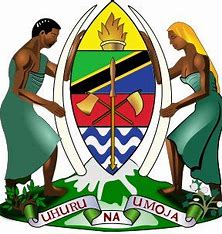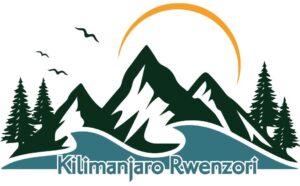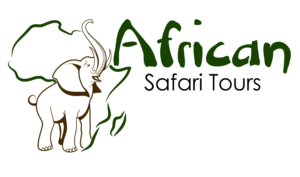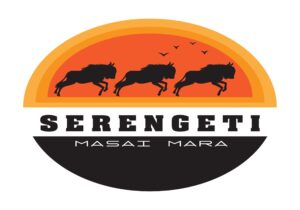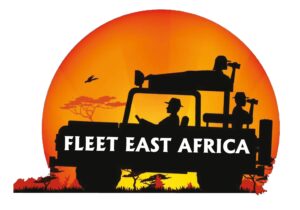Rumanyika-Karagwe national park
Location and History of Rumanyika-Karagwe National Park
Rumanyika-Karagwe National Park is situated in the remote northwestern corner of Tanzania in the Kagera Region. This park spans an area of approximately 247 square kilometers and is situated near the borders with both Rwanda and Uganda.
Rumanyika Karagwe National Park was named in honor of King Rumanyika I Orugundu. In addition, he was the prominent leader of the Karagwe kingdom. Also, Rumanyika National Park, mostly referred to as Hifadhi ya Taifa ya Rumanyika-Karagwe in Swahili, is the youngest national park in Tanzania, officially established in July 2019. Before it was officially declared as a national park, Rumanyika Karagwe was part of Rumanyika-Orugundu Game Reserve, covering an estimated 800 square kilometers. Rumanyika National Park surely offers exciting safari experiences to do in Tanzania for those who visit. Below are some of the details about the national park to be aware of.
How to Get To Rumanyika-Karagwe National Park Park in Tanzania
Knowing how to get to this park is a key detail to keep in mind when planning a Tanzania safari to Rumanyika Karagwe. Below is what you should know about how to get to Rumanyika National Park in Tanzania;
There are smaller roads or tracks from nearby local towns to this park, such as Kaisho (~18.4 km), Kyerwa (~26.6 km), and Kaitambuzi (~27.1 km). So, these roads are away from the park boundary, and for Visitors coming from Uganda, they can use the Kikagati border crossing. Additionally, this route leads to Murongo, and for those coming from Rwanda, they can use the Rusumo border crossing, then proceed through Karagwe toward Murongo. Alternatively, if you are already in Tanzania, take a road trip from major cities like Mwanza and Arusha. Or go on a road trip from Bukoba Town to Murongo, which is about 220 km.
For sightseers who want quicker means of transport, they can opt for air access to the national park. There are commercial airports such as Bukoba Airport (BKZ) and Chato Airport, which are nearest to the Rumanyika Karagwe National Park. So, visitors fly into one of these, then transfer by road or charter aircraft to this park.
Rumanyika Karagwe National Park Map
Climate of Rumanyika National Park
Rumanyika Karagwe is classified to have a sub-humid kind of climate, unlike other Tanzania National Parks. So, rainfall in that unique place to visit in Tanzania varies depending on altitude and location within the park; Hence, the park is estimated to receive around 729 mm to over 1,300 mm annually.
Rumanyika Karagwe National Park’s heaviest rains fall between March and May. In addition, a shorter rainy season often occurs between October and December. Rumanyika National Park has its dry season typically runs from June to September, with temperatures fluctuating based on elevation. Daytime highs in the valleys reach into the low 30s°C and nighttime temperatures in forested uplands dropping to around 13–15°C.
Worst/Best Time to Visit Rumanyika Karagwe National Park, Tanzania
It is wise to know the best and worst times to go on a safari to Rumanyika-Karagwe National Park in Tanzania. So, note that different experiences at this park usually peak in different months, which is the best time. Other months where these experiences and things to do in Rumanyika National Park don’t blossom are called the worst time.
Best time to visit
The dry season from June to October is the best time to visit Rumanyika National Park. So, this is due to the conditions that favour wildlife viewing, mobility, and scenic appreciation. Here is evidence as to why this is the best time to visit the national park.
- Since the water tends to become scarce in the bush, wildlife in Rumanyika opt to stay around permanent water bodies like the Rumanyika River and Lake Rumanyika. Also, they stay around wetland zones such as Nsonge Swamp, which allows tourists to easily spot wildlife like zebras, giraffes, and waterbucks often spotted in open savannah near these water sources. Also, there are chances to witness predators like leopards targeting their prey and also drinking water.
- Roads and bush tracks are navigable, including the Rumanyika Valley trails or skirting the hills near Nyabiyonza, the Rwagati River tributary. Or those climbing toward Kagarama Hill, hence Visitors can explore further and deeper into Rumanyika Karagwe without getting stuck or rerouted.
Worst time to go on a safari to Rumanyika Karagwe in Tanzania
The wet season months from March to May are the worst Time to go on a safari to Rumanyika Karagwe national park, Tanzania. So, this is because there are long, heavy rains making it hard to enjoy adventures at the park, including game drives. Below are some of the reasons why it is termed the worst time to visit the park.
- Flooded and Impassable Roads make it hard to move along some trails during the wet season. This is more difficult along the central Rumanyika Valley trails or running alongside the Kigarama Escarpment. Also, near wetlands such as Ruhinda Swamp or up the Nyabisindu Hills. So, these roads and trails in Rumanyika become muddy and slippery to the extent that even 4×4 vehicles in Tanzania often struggle and break down.
- Also, it is hard to locate animals as a result of the presence of various waterlogged areas in the park due to rain. Hence, causing visitors to head into deeper zones of the park, such as Mubale Forest Patch.
Rumanyika Karagwe Wildlife and Birdlife
Rumanyika Karagwe National Park has notable wildlife species, including mammals, primates, aquatic species, carnivores, and especially birds. So, this makes this destination fit for wildlife safaris in Tanzania, especially for those interested in sightseeing tours.
Mammals in Rumanyika inlcude herbivores such as Zebras, Giraffes, Waterbuck, Bushbuck, Sitatunga, and some big five in Tanzania like Elephants and Buffaloes. These mammals can be particularly witnessed around Lake Rumanyika and the wetland zones. Also, there are Hippos and Crocodiles, and these semi‑aquatic species are found around Lake Rumanyika and in the lakeshore fringes of the park waters. Carnivores in Rumanyika include Spotted hyenas, jackals, and the Tanzania big five cats, Lions, and leopards. Primates like olive baboons and vervet monkeys are found especially in forest edges, riverine forest zones, and woodlands of Rumanyika Karagwe.
Rumanyika National Park has over 300 bird species, making it a unique place to visit for birdwatching tours in Tanzania. Birds in this park include: African Fish Eagle, Grey‑Crowned Crane, Malachite Kingfisher, and Pied Kingfisher. Other popular bird species to see include the Yellow‑Billed Stork, Grey Heron, African Jacana, Little Grebe, and Marabou Stork. These birds are mostly witnessed around Lake Rumanyika’s shores, the swampy inlets, feeder streams, and forest patches on the lower valley slopes.
Tourist Attractions in Rumanyika
Various attractions within Rumanika National Park make it stand out from other Tanzania national parks. Rumanyika has unique attractions such as the Central River Valley, Lake Rumanyika, and Kishanda Valley, which are a must-visit during your safari. They are detailed as follows.
-
Lake Rumanyika:
- This is the life of this Tanzanian park, and also this is where the park gets its name from. Lake Rumanyika lies in the lower parts of the central valley. It is formed by the slow winding river at the base of the valley, breaking up into lakes and swampy areas. This lake is home to various aquatic wildlife such as hippos, crocodiles, and many resident and migratory water birds.
-
The Central River Valley:
- This is a deep valley located at the core of Rumanyika-Karagwe. It is carved by a slow‑winding river, flowing through the valley floor, feeding into wetlands, swamps, and lake systems. The valley’s lower slopes are covered in dense bush and forest, while the higher slopes transition into Acacia‑tall grass woodland. So, it is a great point in the park for Tanzania photo safari experiences.
-
Woodland and Forested Slopes:
- These are great eye-catching features of the park, mostly from the lower slopes of the valley. The thick forest and dense bush, which are surely mind-blowing to view, are also homes to primates such as olive baboons and vervet monkeys. Even smaller antelopes like duikers. The forest corridors, most especially near streams and rivers, are quieter, cooler, and great for nature walks.
-
Scenic Hilltops in Rumanyika:
- This park is has named hills around which serve as vantage points.Additionally, these include Kaburaishoke Hill rising to about 1,284 meters, Kaburaishoke, Nyakasana Hill (1,619 m), and Karundu Hill (1,602 m). These spots are excellent for watching sunrise, birdlife in flight, and for photographing landscapes.
-
Kishanda Valley:
This is a famous valley and it is associated with wildlife reserves in adjacent areas. Its name indicates a lower lying valley area that may harbor wildlife, especially elephants, given its relative seclusion and depth.
Activities/ Things to do in Rumanyika Karagwe National Park
Rumanyika Karagwe offers some of the most exciting safari experiences to its visitors. So, this includes the top things to do in Rumanyika, like game drives, camping, and birdwatching, followed by other safari experiences.
- Game drives: this is one of the famous safari activities carried out at this national park. This activity permits sightseers to witness the park’s beauty and wildlife. Game drives in Rumanyika are done in the early mornings and late afternoons. So, explore the valley bottoms, riversides, and open savannahs of Rumanyika during this activity.
- Walking safaris. Engage in nature walk safaris within this park. Walking safaris are led by well-trained Tanzania safari guides who lead them to different areas of Rumanyika on foot. Explore the forests, and move along rivers, and up hillsides. Hence, these nature walk activities provide intimate encounters with plant life, bird species, and animal tracks.
- Birdwatching: Rumanyika Karagwe is a great destination for birding experiences. This birding activity is excellent year-round and commonly carried out around Lake Rumanyika, rivers, and wetlands. Visitors get the chance to witness birds such as the African Fish Eagle and many more.
- Boat safaris: Rumanyika- Karagwe offers boat safari experiences on Lake Rumanyika, hence offering a peaceful way to see aquatic wildlife and birds.
- Cultural visits. Engage in cultural visits done within the nearby communities, and learn about the historical and societal context of the Karagwe region.
Access Gates to Rumanyika National Park
Accessing this Rumanyika Karagwe National Park in Tanzania is through one main gate called Murongo Gate. So, below is what you need to know about this gate. Murongo is the main road‐access point to this park. Also, Murongo gate is about 220km by road from Bukoba Town, and about 327 km from Chato Town. Yet from Ibanda‑Kyerwa airstrip to Murongo is about 110 km by road.
Entry fees to Rumanyika-Karagwe National Park
Rumanyika doesn’t differ from other national parks in Tanzania; it also has its entry fee prices as arranged by TANAPA. So, this is done for the well maintenance of the national park, and these Rumanyika entry fees are as follows;
- Visitors 16 years and above
- East African / Tanzanian citizens: 5,000 TSh
- Foreign non‑East African citizens: $30
- Expatriates or residents living in Tanzania: $15
- Visitors aged 5–15 years
- East African / Tanzanian citizens: 2,000 TSh
- Foreign non‑East African citizens: $ 10
- Expatriates/residents: $ 5
- Children under 5 years: free entry
Where to Stay in Rumanyika-Karagwe Game Park, Tanzania

Currently, inside the park, accommodation is basic. So, it is mostly limited to self-arranged camping or seasonal mobile camps. However, sightseers to the Rumanyika national park can opt for accommodations outside the park, and most especially near towns such as Murongo, Kayanga, and Bukoba. So, these accommodations outside Rumanyika in Tanzania offer a range of guesthouses, lodges, and hotels of varying comfort levels. That is at different costs from mid-range, luxury, and budget ranges.
Popular lodges outside Rumanyika Karagwe include:
-
Kayanga Guesthouses – Rates: $40–$80/night
-
Bukoba Lake Victoria Hotels – Rates: $80–$250/night
-
Murongo Safari Lodge – Rates: $50–$100/night
-
Balamaga B&B in Bukoba – Rates: $40–$80/night
Our Affordable Luxury Rumanyika safari Packages
Book our Affordable Luxury Rumanyika safari Packages with us. Visit the attractions in Rumanika-Karagwe National Park and enjoy all experieces of your choice.
